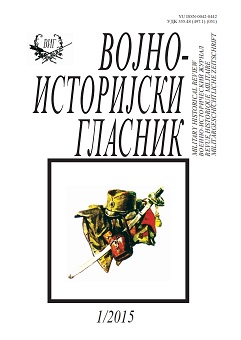Ћеле-кула између мита и историје: Процес уобличавања једног места сећањa
The Skull Tower between Myth and History: The Process of Shaping a Space of Memory
Author(s): Igor BorozanSubject(s): Cultural history, Military history, Political history, 19th Century, The Ottoman Empire, Peace and Conflict Studies
Published by: Institut za strategijska istraživanja
Keywords: Ćele tower; Skull tower; battle of Čegar; memory; history; visual culture; Serbian and Ottoman conflict;
Summary/Abstract: The “Skull Tower” has played a significant role in Serbian collective memory. This unique material and memorial topos, constituted as a pledge of remembrance of the conflict between the Serbian and Ottoman combatants (as well as a warning by the Ottomans), was continuously shaped during the 19th century along the lines of the existing ideological and cultural patterns. Raising the Skull Tower like an anti-civilization topos, the triumph of the Ottoman Army and the defeat of the Serbian troops at Battle of Čegar in 1809, had been “eternally” visualized. The defeat of Serbian rebels near the village of Kamenica (close to the city of Niš), marked the beginning of a process of shaping a two-fold memory of the great battle. The Ottoman and Serbian memories of the Battle of Čegar were sublimated into the very Skull Tower via the skulls of Serbian rebels embedded its walls. Keeping the memory of the famous monument alive, as well as its modification from the Ottoman to the Serbian memorial theme, points to the development and use of the collective memory in the 19th century.
Journal: Vojnoistorijski glasnik
- Issue Year: 2015
- Issue No: 1
- Page Range: 23-40
- Page Count: 18
- Language: Serbian

